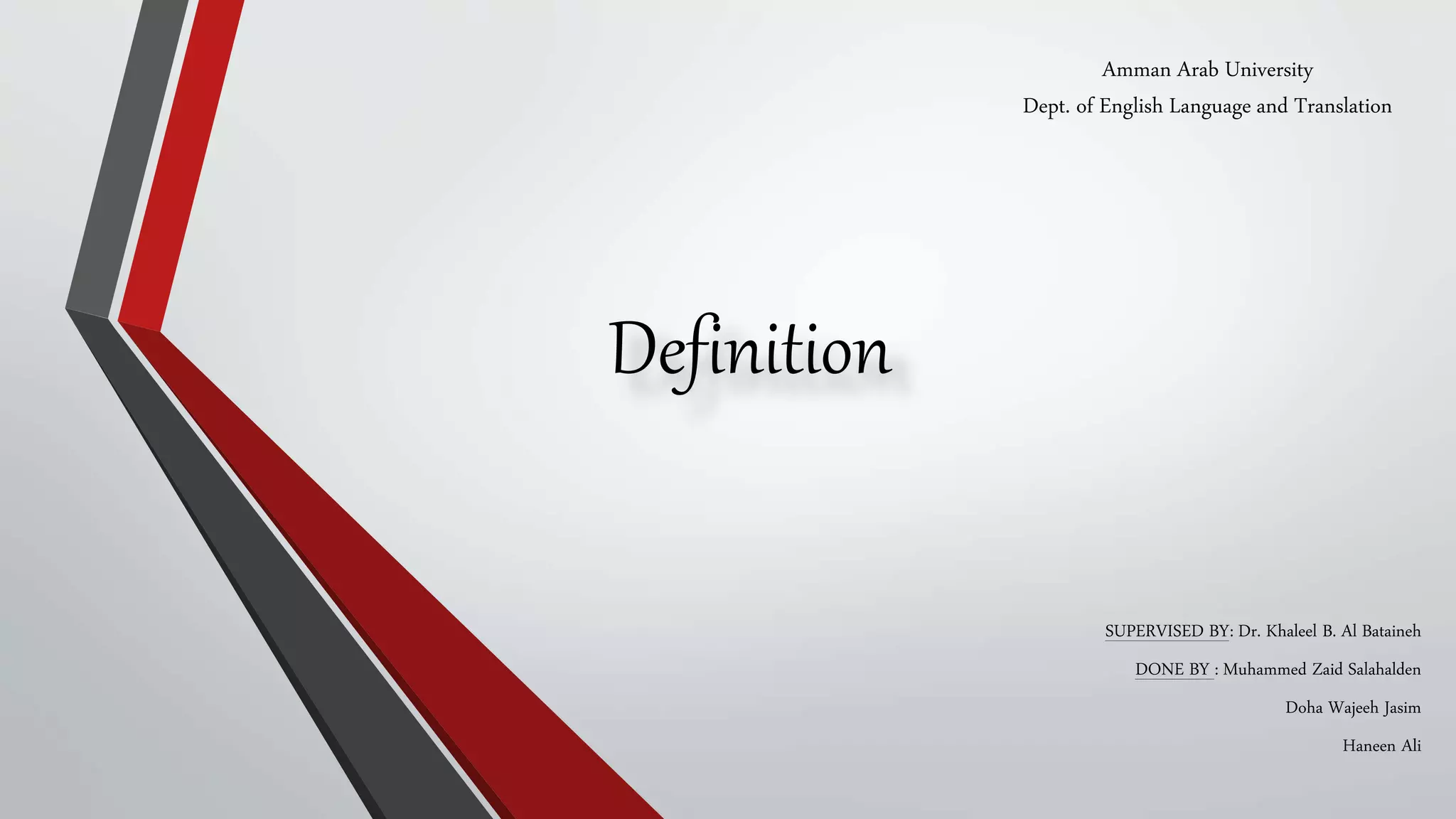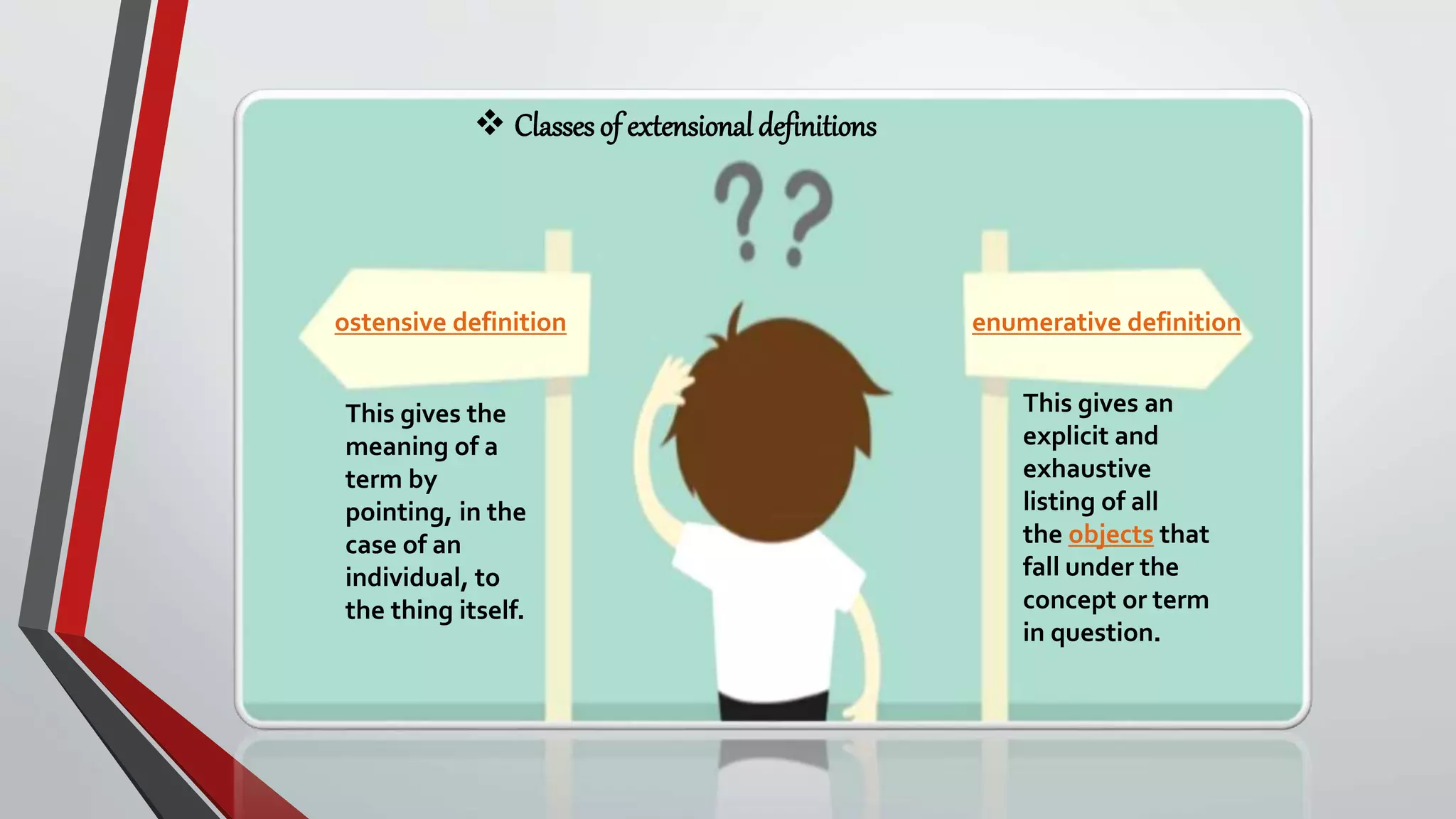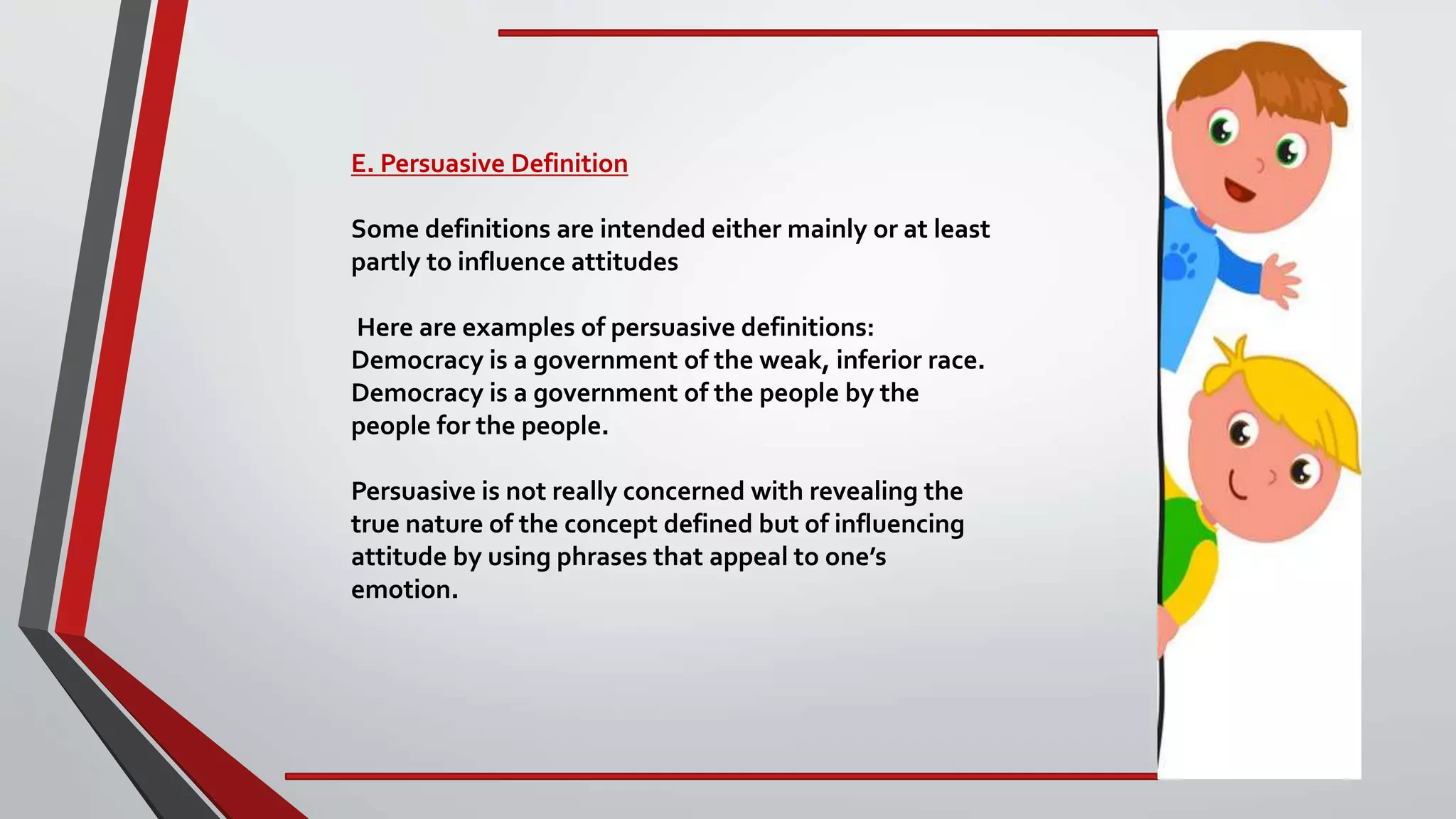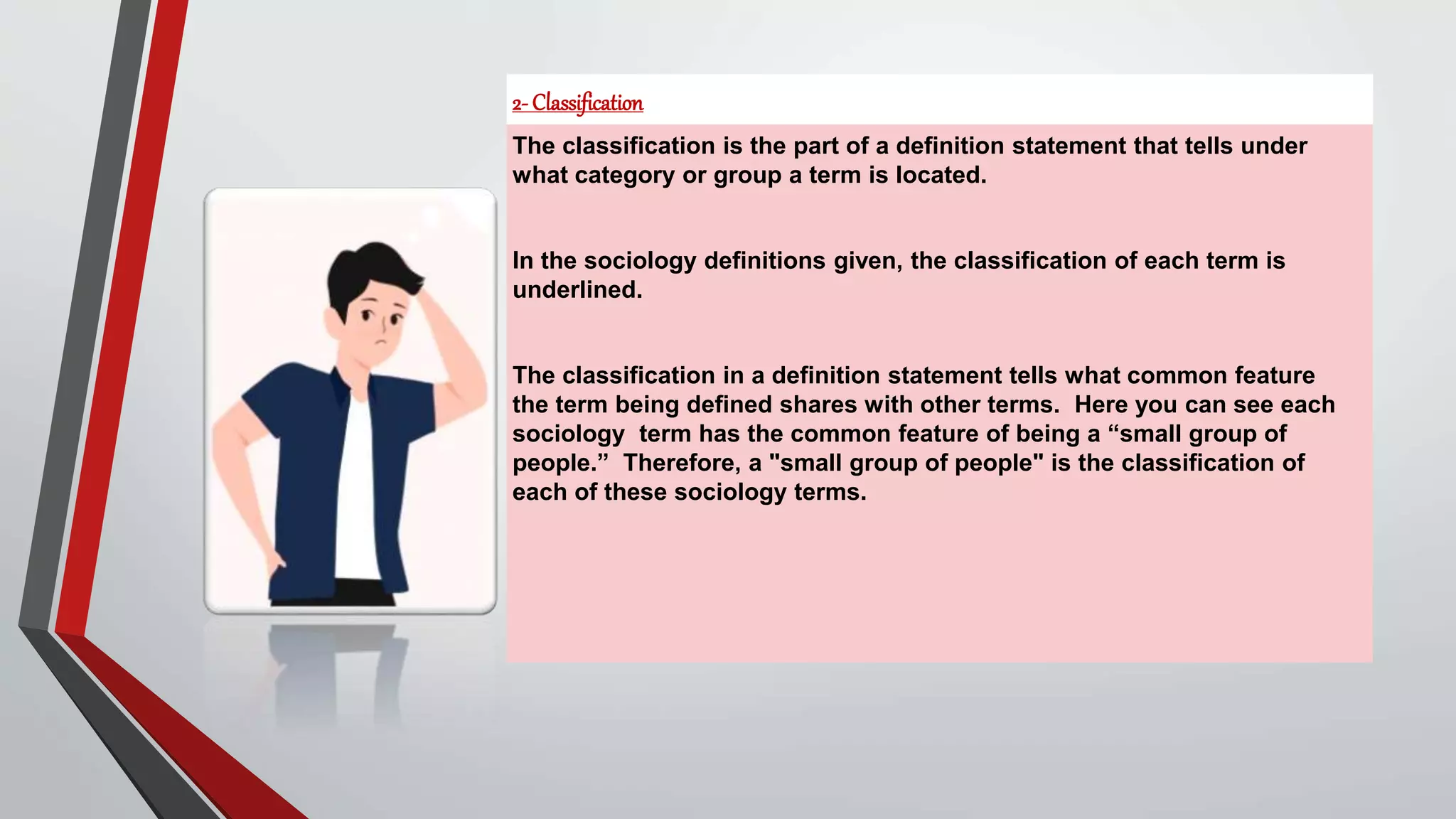The document discusses different types of definitions including formal, informal, and extended definitions. It explains that a definition should have three parts: the term being defined, its classification, and identifying characteristics. Good definitions are precise, not vague, and allow terms to be clearly understood. Definitions help improve communication and decision making by promoting shared understanding.


























